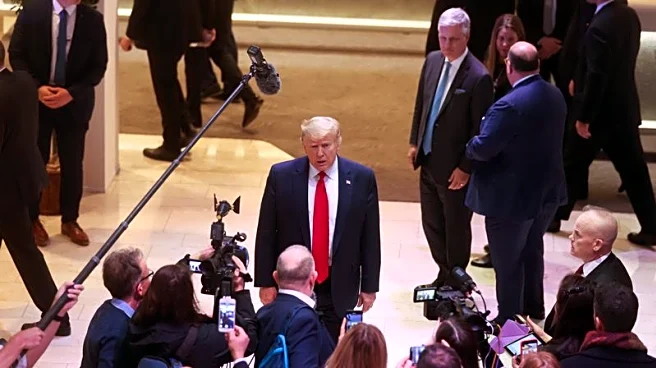What's Happening?
Switzerland has reached an agreement with the United States to lower the tariff on Swiss goods from 39% to 15%. This change follows negotiations between U.S. and Swiss officials and a visit by Swiss executives
to President Trump. The initial 39% tariff, imposed in August, significantly impacted Switzerland's economy by raising the cost of exporting pharmaceuticals, gold, watches, and chocolate to the U.S. The tariff was a response to the trade deficit between the two countries. The new agreement includes commitments from Switzerland to locate new manufacturing in the U.S., including for pharmaceuticals and railway equipment.
Why It's Important?
The reduction in tariffs is crucial for Switzerland's export-driven economy, as it lowers the cost of exporting key goods to the U.S. This agreement is expected to enhance trade relations between the two countries and provide economic relief to Swiss exporters. For the U.S., the deal represents a strategic move to attract foreign manufacturing and investment, potentially boosting domestic production and job creation. The agreement also reflects the Trump administration's approach to addressing trade imbalances through bilateral negotiations.
What's Next?
Further details of the agreement are expected to be announced, and the deal will likely lead to increased Swiss investment in the U.S. The Trump administration may continue to negotiate similar agreements with other countries to address trade deficits and attract foreign manufacturing. The tariffs imposed by the administration are under scrutiny in a Supreme Court case, and the outcome could influence future trade policies.
Beyond the Headlines
The agreement with Switzerland highlights the complexities of international trade negotiations and the impact of tariffs on global economic relations. It underscores the importance of strategic partnerships and the role of diplomacy in resolving trade disputes. The deal may also set a precedent for future negotiations with other countries facing high tariffs, as the U.S. seeks to balance trade deficits and promote domestic manufacturing.













